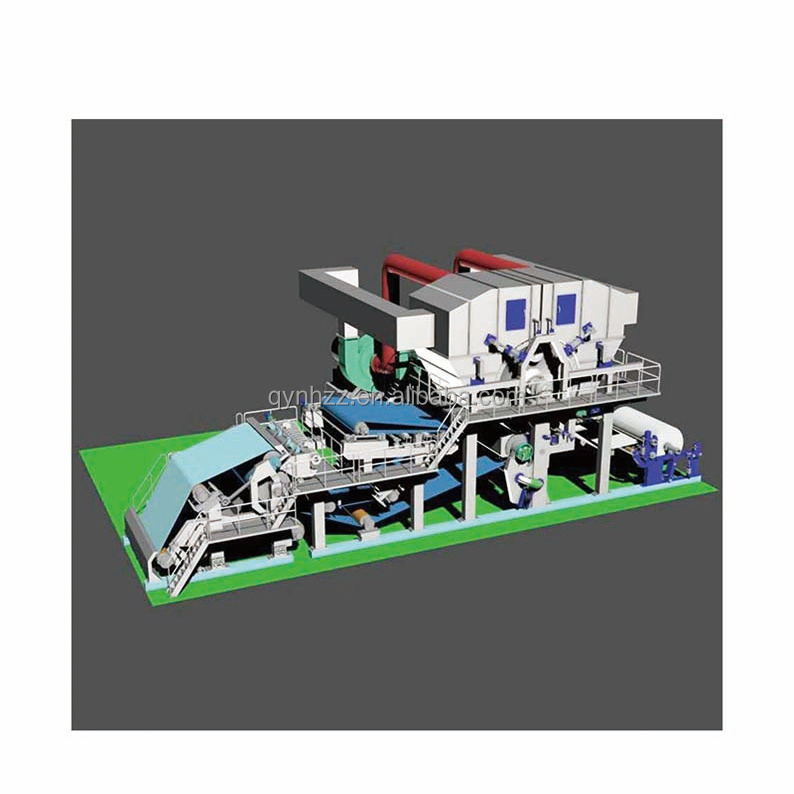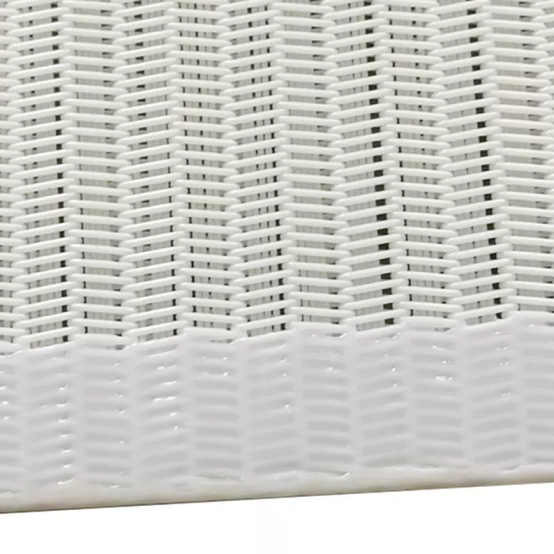Unlocking Efficiency: The Critical Role of Paper Machine Formers in Modern Papermaking
Release time:
2025-04-27
Unlocking Efficiency: The Critical Role of Paper Machine Formers in Modern Papermaking Table of Contents Introduction to Paper Machine Formers The Importance of Paper Machine Formers in Papermaking The Design and Functionality of Paper Machine Formers Materials Used in Paper Machine Formers Technological Advancements in Paper Machine Formers Enhancing Production Efficiency
Unlocking Efficiency: The Critical Role of Paper Machine Formers in Modern Papermaking
Table of Contents
- Introduction to Paper Machine Formers
- The Importance of Paper Machine Formers in Papermaking
- The Design and Functionality of Paper Machine Formers
- Materials Used in Paper Machine Formers
- Technological Advancements in Paper Machine Formers
- Enhancing Production Efficiency with Paper Machine Formers
- Impact on Paper Quality and Consistency
- Best Practices for Maintenance and Care
- The Future of Paper Machine Formers in the Industry
- Frequently Asked Questions
- Conclusion
Introduction to Paper Machine Formers
In the intricate world of papermaking, **paper machine formers** play an indispensable role. These components are responsible for shaping and forming the paper sheet as it transitions from pulp to finished product. As the industry evolves, the need for efficient and effective paper machine formers is becoming increasingly vital. This article delves into the various aspects of paper machine formers, including their design, functionality, and impact on production efficiency.
The Importance of Paper Machine Formers in Papermaking
Understanding the significance of paper machine formers is crucial for anyone involved in papermaking. These machines are not merely support structures; they are pivotal in determining the quality and characteristics of the paper produced. By facilitating the even distribution of pulp and controlling the drainage process, paper machine formers ensure that the final product meets the desired specifications.
Key Benefits of Paper Machine Formers
1. **Consistency in Production**: Paper machine formers provide uniformity, ensuring that each sheet maintains the same thickness and texture. This consistency is essential for meeting customer expectations.
2. **Increased Production Speed**: Modern formers are designed to optimize the papermaking process, allowing for faster production rates without compromising quality.
3. **Cost Efficiency**: By improving the efficiency of the papermaking process, paper machine formers help reduce operational costs, making production more economically viable.
The Design and Functionality of Paper Machine Formers
The design of paper machine formers is a blend of engineering precision and innovative technology. A typical paper machine former consists of several key components, each serving a unique function in the papermaking process.
Key Components of Paper Machine Formers
- **Wire Section**: This is where the pulp suspension first encounters the forming wire. The wire section is crucial for initial drainage and sheet formation.
- **Vacuum Boxes**: These are strategically placed to enhance the dewatering process, allowing for quicker formation of the paper sheet.
- **Forming Fabric**: The fabric used in the forming section is essential for the paper's surface quality. Different fabric types can influence the final paper product's texture and porosity.
How Formers Work
The process begins when the pulp slurry is introduced onto the forming fabric. As the slurry spreads, the water drains through the fabric while the fibers begin to bond together, forming a wet sheet. The vacuum boxes assist in this dewatering process, ensuring that the sheet reaches the desired consistency before moving on to the pressing section.
Materials Used in Paper Machine Formers
The choice of materials for constructing paper machine formers is critical to their performance and longevity. High-quality materials can withstand the harsh conditions of the papermaking process, such as moisture, heat, and friction.
Common Materials
- **Stainless Steel**: Known for its durability and resistance to corrosion, stainless steel is often used in structural components.
- **Polymer Fabrics**: These materials offer flexibility and durability, making them ideal for forming fabrics in paper machine formers.
- **Composites**: Some modern formers utilize composite materials that combine the strengths of various substances to enhance performance.
Technological Advancements in Paper Machine Formers
The papermaking industry has witnessed significant advancements in technology, particularly in the design and operation of paper machine formers. These innovations have led to enhanced efficiency, reduced downtime, and improved product quality.
Smart Forming Technology
Recent developments have incorporated automation and smart technology into paper machine formers. These systems can monitor various parameters, such as moisture content and speed, allowing for real-time adjustments that optimize performance.
Energy Efficiency
Newer paper machine formers are designed with energy efficiency in mind. Features such as energy-efficient motors and optimized hydraulic systems contribute to lower energy consumption during operation, making papermaking more sustainable.
Enhancing Production Efficiency with Paper Machine Formers
Efficiency in production is a key focus for papermakers. By investing in high-quality paper machine formers, manufacturers can significantly enhance their production processes.
Streamlined Operations
Modern paper machine formers allow for streamlined operations, reducing bottlenecks that can slow down production. This, in turn, increases overall output while maintaining quality standards.
Reduced Waste
Effective paper machine formers minimize waste by ensuring that the pulp is utilized effectively, thereby reducing the amount of raw material needed and enhancing overall sustainability.
Impact on Paper Quality and Consistency
Quality is a critical factor in the success of any papermaking operation. Paper machine formers have a profound impact on the quality and consistency of the final product.
Surface Quality
The design and materials used in paper machine formers can influence the surface finish of the paper. A smooth, even surface is essential for applications requiring high-quality printing and finishing.
Thickness Control
Accurate control over the thickness of the paper is vital for meeting industry standards and customer specifications. Advanced paper machine formers provide precise control over the sheet's thickness during the forming process.
Best Practices for Maintenance and Care
To ensure optimal performance and longevity of paper machine formers, proper maintenance is essential. Adhering to best practices can prevent costly downtimes and enhance production efficiency.
Regular Inspections
Conducting regular inspections of the forming machinery can help identify potential issues before they escalate. This proactive approach to maintenance can save time and resources.
Cleaning Protocols
Implementing effective cleaning protocols is crucial for preventing build-up that can affect the performance of paper machine formers. Regular cleaning helps maintain optimal production quality.
The Future of Paper Machine Formers in the Industry
As the papermaking industry continues to evolve, the role of paper machine formers will become even more critical. Future developments may include advanced automation, improved materials, and sustainable practices that further enhance efficiency and quality.
Innovations on the Horizon
Emerging technologies such as artificial intelligence and machine learning may revolutionize the design and operation of paper machine formers, allowing for even greater efficiency and adaptability to changing market demands.
Frequently Asked Questions
1. What are paper machine formers?
Paper machine formers are components of papermaking machines responsible for shaping and forming the paper sheet from pulp.
2. How do paper machine formers affect paper quality?
The design and operation of paper machine formers directly impact the surface quality, thickness, and consistency of the final paper product.
3. What materials are commonly used in paper machine formers?
Common materials include stainless steel, polymer fabrics, and composite materials, which provide durability and performance under various conditions.
4. How can I improve the efficiency of my papermaking process?
Investing in high-quality paper machine formers and implementing regular maintenance practices can significantly enhance production efficiency.
5. What advancements are being made in paper machine formers?
Recent advancements include smart forming technology, energy-efficient designs, and automation to improve efficiency and reduce production costs.
Conclusion
In conclusion, paper machine formers are critical to the papermaking process, impacting everything from efficiency to product quality. By understanding their design, functionality, and the advancements in technology, manufacturers can unlock significant improvements in their production processes. Investing in high-quality paper machine formers and adhering to best maintenance practices will not only enhance operational efficiency but also ensure that the final products meet the highest standards of quality. As the industry continues to evolve, staying ahead of technological advancements will be key to maintaining a competitive edge in the papermaking sector.
Qinyang NH Paper Machinery Industrial Group Co., Ltd.
WhatsApp/WeChat:Cathy Wang 0086-15721522521
WhatsApp/WeChat:Ailsa Zhao 0086-18300605679
ADD: Jianshe Road(South),Qinyang City Henan Province,China

Cathy Wang

Alisa Zhao

TikTok
Copyright©Qinyang City Nianhai Net Industry Co., Ltd.
SAF Coolest v1.3.1.1 设置面板 AIVSX-ZBBO-FQSEE-ZAS
无数据提示
Sorry, the current column has no content for the time being.!
You can view other columns or returnHome Page




